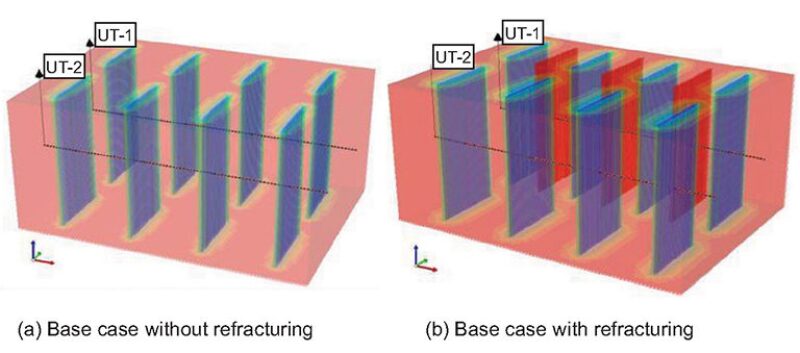In this paper, shale-gas-field data have been evaluated and incorporated in simulations for both carbon dioxide (CO2) enhanced-gas-recovery (EGR) and refracturing-treatment purposes. This comprehensive sensitivity study helps in understanding the key reservoir and fracture properties that affect production performance and EGR in shale-gas reservoirs. The findings of this study recommend initial hydraulic refracturing of shale reservoirs for enhancing gas production, followed by CO2 injection at a later time.
Introduction
In this paper, two different EGR methods are investigated and systematically compared in terms of efficiency. The first method is a refracturing treatment in order to revive a shale-gas well that has failed to achieve economic gas-production rates.


